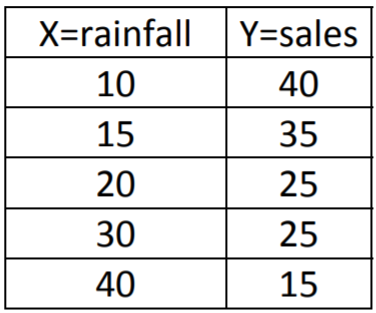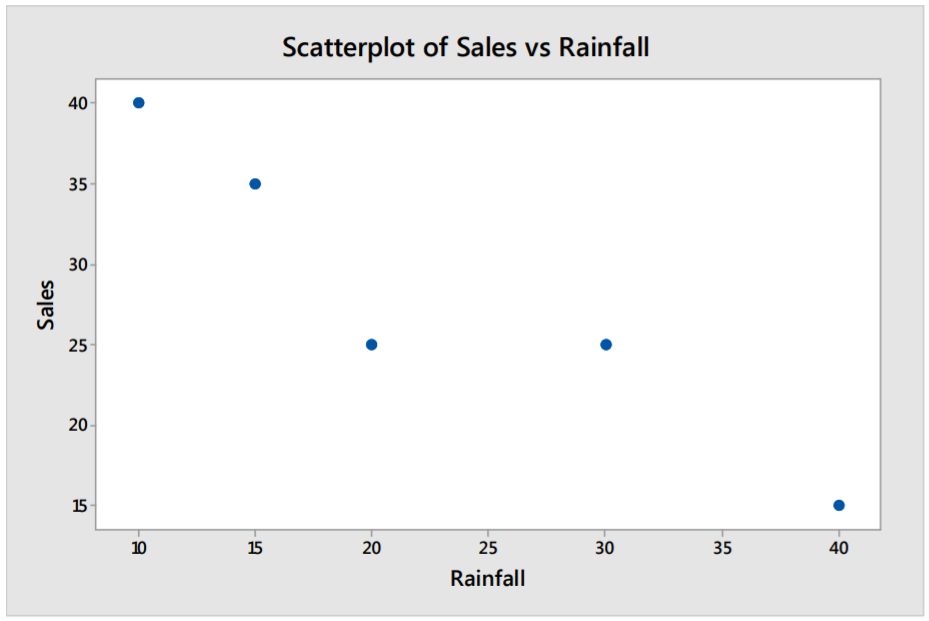14.1: Bivariate Data and Scatterplots Review
- Page ID
- 20926
In Chapter 3, we defined bivariate data as data that have two different numeric variables. In an algebra class, these are also known as ordered pairs. We will let X represent the independent (or explanatory) variable and Y represent the dependent (or response) variable in this definition. Here is an example of five total pairs in which X represents the annual rainfall in inches in a city and Y represents annual sales of sunglasses per 1000 population.
The best way to graph bivariate data is by using a Scatterplot in which X, the independent variable is the vertical axis and Y, the dependent variable is the horizontal axis.
Here is an example and scatterplot of five total pairs where X represents the annual rainfall in inches in a city and Y represents annual sales of sunglasses per 1000 population.

Solution
In the scatterplot for this data, it appears that cities with more rainfall have lower sales. It also appears that this relationship is linear, a pattern which can then be exemplified in a statistical model.



